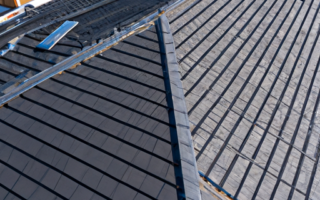Understanding the Basics of Roof Construction: A Comprehensive Guide
Understanding the Basics of Roof Construction is an essential part of any comprehensive guide to building a strong and durable roof. Whether you are a homeowner or a professional contractor, having a solid understanding of the fundamental aspects of roof construction is crucial to ensure the safety and longevity of any building.
One of the key components of roof construction is the roof truss system. Roof trusses are prefabricated structures that provide support and stability to the roof. They consist of a framework of beams, posts, and braces that distribute the weight of the roof evenly and transfer it to the walls of the building. Understanding the different types of trusses, such as gable trusses, hip trusses, and gambrel trusses, is essential in determining the appropriate design for a specific building.
In addition to trusses, roof construction also involves other important elements, such as roof decking, underlayment, and roofing materials. Roof decking, typically made of plywood or oriented strand board (OSB), is the base layer that provides a flat and stable surface for the roofing materials to be installed. Underlayment, also known as roofing felt, is a waterproof barrier that is installed over the roof decking to protect the building from water penetration.
The choice of roofing materials is another crucial aspect of roof construction. There are various options available, including asphalt shingles, metal roofing, tile roofing, and slate roofing. Each material has its own advantages and considerations, such as durability, cost, and aesthetic appeal. Understanding the characteristics and installation requirements of different roofing materials is important in selecting the most suitable option for a specific project.
Proper ventilation is another essential component of roof construction. Adequate airflow helps to regulate temperature and moisture levels in the attic, preventing the growth of mold and protecting the structural integrity of the roof. Ventilation can be achieved through the use of vents, ridge vents, soffit vents, or mechanical ventilation systems. Understanding the importance of ventilation and the different methods available is crucial in maintaining a healthy and efficient roofing system.
Lastly, understanding the basics of roof construction also involves familiarizing yourself with common roofing terms and techniques. Terms such as ridge, eave, flashing, and valley are important to know when communicating with contractors or understanding roofing plans. Techniques like proper flashing installation, nailing patterns, and roof pitch calculations are essential in ensuring a well-built and watertight roof.
In conclusion, understanding the basics of roof construction is vital in building a durable and long-lasting roof. From roof trusses to roofing materials and ventilation systems, each component plays a crucial role in the overall structure and functionality of the roof. By familiarizing yourself with these fundamental aspects, you can make informed decisions and effectively communicate with professionals during the construction process.
Mastering the Art of Roof Construction: A Step-by-Step Guide
Mastering the art of roof construction requires an understanding of various techniques and materials involved. Whether you are a homeowner looking to build a new roof or a professional roofer looking to enhance your skills, this step-by-step guide will provide you with the essential knowledge you need.
The first step in mastering roof construction is to familiarize yourself with the different types of roofs. The most common types include gable, hip, flat, and shed roofs. Each has its unique design and construction requirements, so make sure to choose the right type for your project.
Next, it’s crucial to understand the various components of a roof. These include the roof frame, which provides the structure and support, and the roofing materials, such as shingles, tiles, or metal sheets. It’s important to choose high-quality materials that are durable and weather-resistant.
Once you have a solid understanding of the types of roofs and materials, it’s time to move on to the actual construction process. Begin by preparing the roof frame, ensuring it is sturdy and properly aligned. This step is essential for a long-lasting and stable roof.
Next, install the underlayment, which provides an additional layer of protection against water and moisture. This is especially crucial in areas with heavy rainfall or snowfall. Choose an underlayment material that is suitable for your climate and follows the local building codes.
After the underlayment, it’s time to install the main roofing material. Whether you choose shingles, tiles, or metal sheets, follow the manufacturer’s instructions for proper installation. Make sure to overlap the materials correctly to ensure proper water drainage and prevent leaks.
Lastly, don’t forget to install flashing to protect vulnerable areas such as chimneys, vents, and skylights. Flashing prevents water from seeping into these areas and causing damage. Proper installation and sealing are crucial to prevent leaks and maintain the integrity of your roof.
Throughout the construction process, it’s important to prioritize safety. Always wear appropriate protective gear, such as gloves, goggles, and hardhats. Ensure that you have a sturdy ladder and stable scaffolding when working at heights.
In conclusion, mastering the art of roof construction requires a combination of knowledge, skills, and attention to detail. By understanding the different types of roofs, choosing the right materials, and following the proper installation techniques, you can build a roof that is not only aesthetically pleasing but also durable and long-lasting for years to come.



